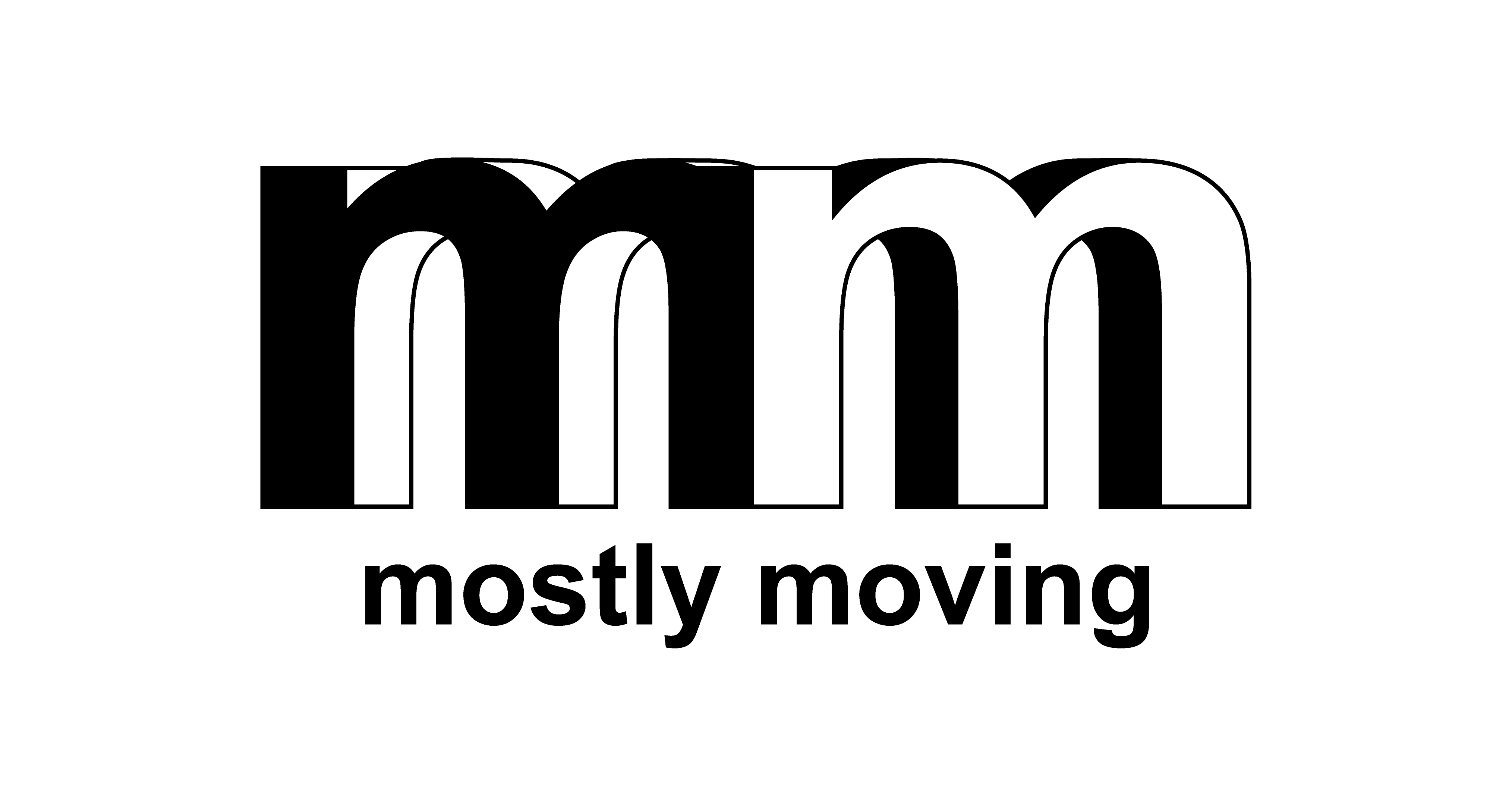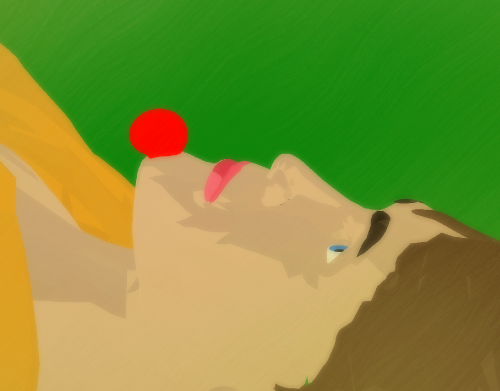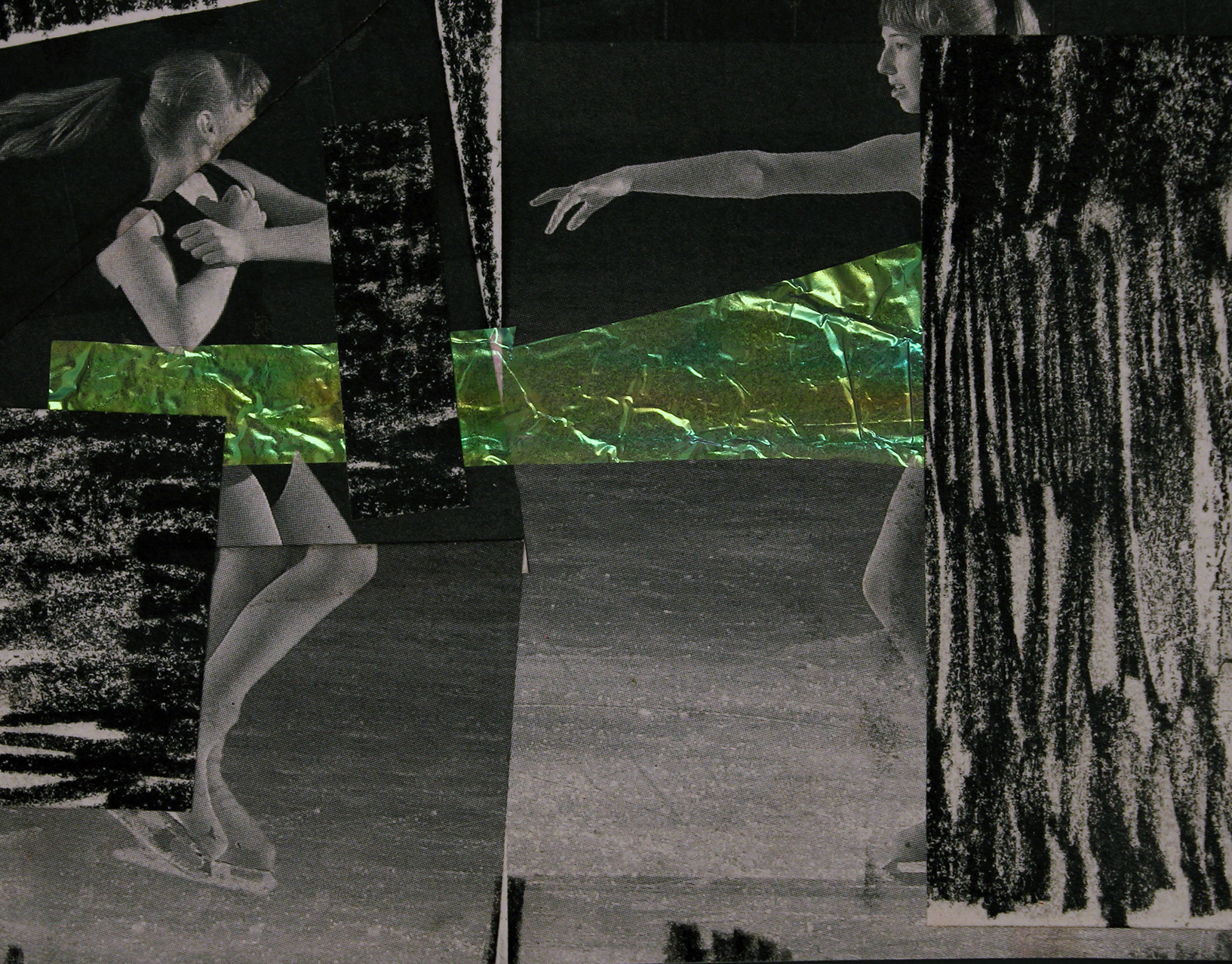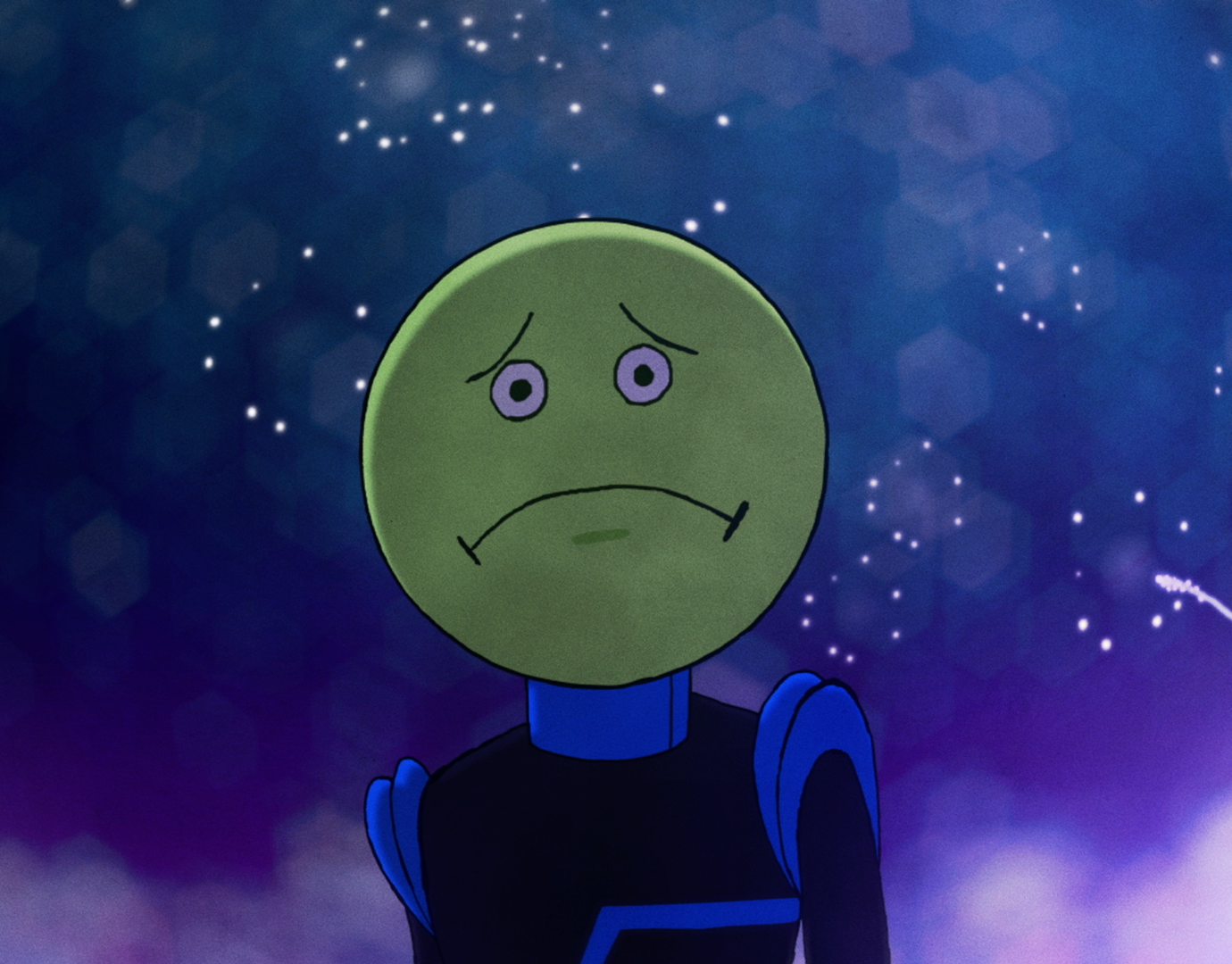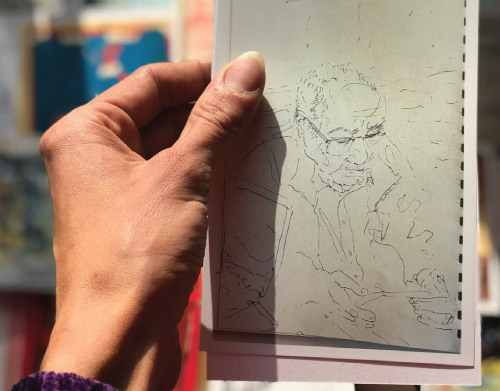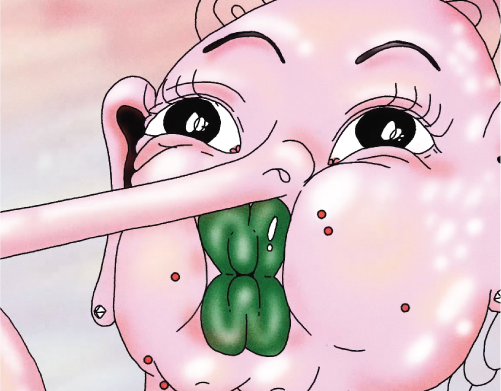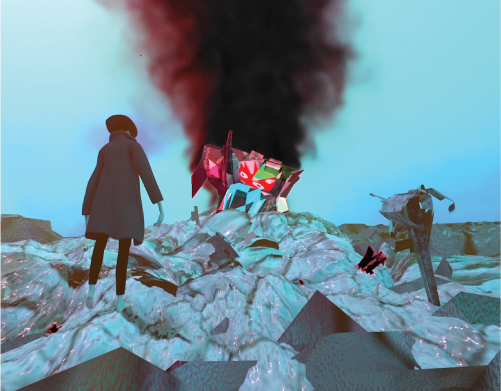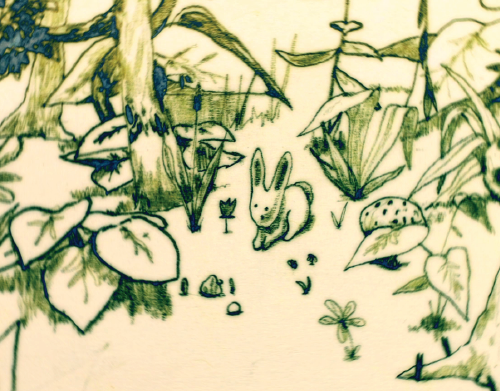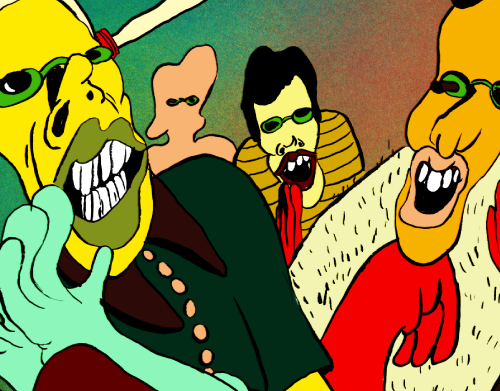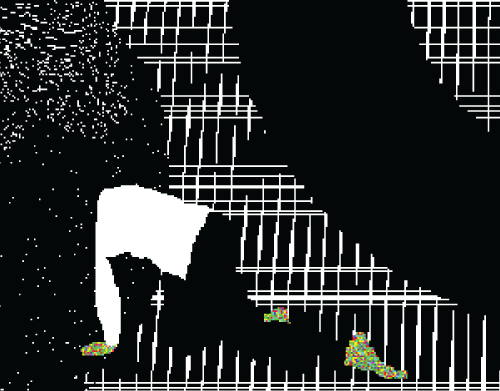Interview with Anna Firth
From MM03, released July 2019
From MM03, released July 2019
----
Anna Firth is a Vancouver based visual artist working with gallery installation and animation. Everything happens all at once in her pieces, with the subjects existing in infinite looping cycles. We see every frame of the sequence at the same time, making for a visually dense collage of dancing lines and soft colors. There are a few reoccurring anthropomorphized characters that seem to be cartoon stand-ins for the artist. These characters are stuck in loops forever enacting the strange movements Anna’s pen strokes decide for them. Her gallery work tends to employ abstract and geometric shapes in a similar looping manner, but with the added visual intrigue of multiple screens and spacial relation. Her practice breaks just about every rule animators are taught to follow both in technique and format. It’s these differences that have allowed her to carve out a unique style and her place within contemporary independent animation. Anna has an MFA from Emily Carr University and is now a member of the animation collective Flavourcel. Beyond that, she co-curates an animation screening event called Soft Screen and maintains a comics publishing project called Swampcone.
----
Mostly Moving: Hi Anna, can you start by telling me a bit about yourself and how you got started with animation?
Anna Firth: Hello! I’m 24, 6’3” and I never had a dream of becoming an artist or an animator. I went to a liberal arts college and I studied aimlessly for a while. Marine biology, chemistry, physics, printmaking, photography. One term I earned credits in sailing and camped out on an island for class. Two years into college I thought about dropping out because I didn’t really seem to have a plan or any interests.
Anyway, this institution didn’t have classes — just programs where you study with the same small group for a year or sometimes a few terms. A friend told me in passing that I should try animation. He said there was a rare program taking applications that would be all experimental media and animation for a whole year. He must have been picking up on something that I was missing because I ended up taking that course and it changed everything for me. A few weeks later I had a stack of punched paper and a borrowed light table. I drew my first animation and something major clicked.
This program was a dreamy experience. We’d watch hours of films in a cold dark theater and go out with Bolex cameras and field recorders making things nonstop. My peers were incredibly talented and everyone’s work was taken seriously. My first film was this feverish stop motion with lots of greenscreen about my experience in a weird body. Everyone was having so much fun and I think we were all making these passionate projects for each other and our friends. I went on to complete a degree in experimental media but I developed an animation practice through that.
gif by Anna Firth
MM: Your work is exclusively loop and cycle-based. What is it about this technique that draws you to it?
AF: I actually used to exclusively make films. They were not very loopy but they were all stop motion. When I started grad school I started working only in drawn animation. The loops started out of practicality. It was easier to churn out short loops than take on longer films when I was shifting my ideas so much. I think maybe I was self-conscious entering a visual arts MFA with few media people so I tried to disguise my animation as a drawing practice at first. Loops worked well for installations and had a more permanent presence in a room.
As I made more and more loops I started to observe really interesting things you can do with the drawn space and overlapping time. It was revisiting Adam Beckett’s work that inspired me to continue working in the structure of the overlapping cycle. Animating long sequences on just a few frames made me feel like I had tied a knot in my brain. The impossible scenes I was making were so confusing to me that the animated product felt like something entirely different from what I had drawn on my stacks of paper. I wondered if I was drawing time travel or cheating time in some way. My choice to work in loops now is far from seeking short cuts. I am just obsessed with the dizzying futility of the looped world.
gif by Anna Firth
MM: The visual style of your loop-making is pretty characteristic. Can you talk about your methods?
AF: I’ve seen other artists working with this style of overlapping loops call it “compounding loops” but I’m not sure if there’s a term everyone is using. I work straight-ahead so I don’t keyframe or tween or anything. I end up creating a small puzzle for myself with these loops because a few things have to happen for them to work. Basically, I draw a sequence. Say I finish frame 29. Instead of grabbing a blank page and going to frame 30, I trace the next frame back onto frame 1 and then work through the stack of pages. If I shot this it would look like the place where I started was popping out of nowhere. I usually go back and add frames to merge that drawing into the new overlapping part or just shrink it onto blank space. It reminds me of sewing and tucking a thread into fabric after you tie a knot. Now I can continue to draw long scenes over the existing animation. When I’m done I can animate the last thing to merge with the existing animation again. The finished product is rarely even three seconds of animation but there could be like ten seconds of actions stuffed into that loop.
This process feels really wild. Characters seem to take on their own agency as they revisit you in tracing the loop over and over. I love letting the lines of the new drawings merge with the lines from the previous lap. In some of my compounding loops, you can see the color of the ink change in my line as I refill my pen over the days that I spend animating. My activity of overworking these loops and drawing the same picture over and over in laps through these stacks of pages is reflected in the repetitive gestures and actions of the characters in my animations.
”Caught Using a Trap and Liberated” / 2017 / Concourse Gallery / Vancouver, B.C. / 10-channel installation
MM: What draws you to making installation based animation over animated short films?
AF: I liked my experience with filmmaking but it never felt like the right form for what I make. Working in the installation context lets me operate more like animation is a tool that I use to make my drawings and people hassle me less about Animation Law. Independent and experimental animation spaces still seem to enforce a lot of expectations around how animation should look/be made. So maybe I’m hiding from the short film world in this lawless installation zone. I should probably say that I love watching short films and I follow animation festival programs as a fan I just chose a different platform for my own work.
My choice to work in installation is also about viewership. Films demand a certain kind of viewing from an audience that is less malleable and very linear. I have one of those short attention spans that come with living in 2019 but I also find myself idle a lot. I’ll catch myself staring at walls or spacing out on the toilet just zoning out long after I’m done using the bathroom. So I like that installations tend to feel like an attention middle ground. You can pass through them and still have an experience or you can idle in them. I love the feeling of seeing a show at its opening then revisiting it regularly and experiencing the different encounters with the work. Many of my installations are on television monitors and I notice people will engage with the animations like they would at a busy sports bar with screens playing in the background where you kind of look past the person you are talking to or watch as a secondary experience. It positions the animation as an independent process that is going and going and going.
“Pine Processionary” /2018 /Ink & gouache on cel, installed on monitors /Michael O’Brian Exhibition Commons
MM: The movements in your animation often feel loose and unpredictable. Do you plan your work out or let it grow organically?
AF: Working straight-ahead I often forget what I’m doing. I’ll be moving two legs and an arm in all kinds of directions and sometimes an arm will get forgotten and it will stutter as I send it left then right quickly a few times before remembering which way it’s going. Some of my animations have this loose, melting look that comes from hand fatigue if I have been drawing too long. It’s really fun to let a character slip a little and follow with the drawings.
Rotato gif by Anna Firth
MM: Both your animation and illustration feature the same anthropomorphized character. Can you tell me about them, and your ideas about character(s) more generally?
AF: I’ve been thinking there should be an animation study that’s just experimental character design because I think there’s a lot of work out there exploring animated bodies and figures that’s miles away from serving narratives or character arcs. Works like Jaakko Pallasvuo’s “Soft Body Goal” and Lilli Carré’s “Jill” come to mind.
I think many experimental animators celebrate rejecting Animation Law. My favorite animation law to break is animating “bad” anatomy. I’m so curious about the regulation that is put in animated bodies. How much gravity they should experience, what their relationship is with entertainment, why they are brought into the animated space and how their bodies should move. Lately, I’ve been interested in treating the loop as a real timeline as if the character is actually stuck in that repetitive state. I use anthro characters to explore the experience of the cartoon body for a few reasons. There’s some neutrality to them. Their identities are blurry and they can function as vague anatomical forms.
I have a few characters that I’ve been using. Some of them are stock characters named for their gestures (Kicker, Lounger) and a few are specific. Rotato is this coy and mischievous cat anthro who thrives in the loops. Gem is the character in my illustrations. They are usually experiencing the hellish side of being animated. They are often static or boiling in place or subject to some cartoon gag. Gem is plagued by bad habits, ruminations, and inhibition. The eels, patterned textiles, beds, screens, and fashion brands are shared between all the characters.
gif by Anna Firth
MM: Can you talk a bit about the Flavorcel animation collective and what it’s like to be a part of it?
AF: Yes! Flavourcel is a dream that became reality for me. I always felt like a loner animator working away under the title of “independent” only to occasionally greet another animator in my treks across vast deserts of lonely frames. Going through grad school in an interdisciplinary program as the only animator I became more and more aware of what was going on in the undergrad animation department. I would only pass through that space to use the hole puncher, chat with the techs and sometimes use the oxberry stand.
Over the years I got to know a few animators doing really cool stuff in the animation labs. Chris Strickler was doing wild direct animation as he was starting on his film “Bird Milk” and Chhaya Naran was researching gifs and I became aware of a smaller network of animators in that year. I went to the final screening for the graduating class and was so impressed and regretful that I hadn’t engaged more. After we all graduated and the end-of-the-year dust settled, we ended up gathering an interest meeting of everyone in our networks in Vancouver who was interested in forming a collective. Flavourcel grew from there!
It’s really empowering to be part of a collective. We meet every other week and it gives us structure that you can’t find many places outside of academia. We hold each other accountable and find ways to keep motivated. Our combined resources and connections are multiplied as a group. One of the most fun things is we have a Discord with some serious channels for meeting minutes, event planning, and production but we also use it as a platform to share cool animations, applications, opportunities and calls for submissions.
MM: What are you working on at the moment?
AF: I have this project I’ve been working on that is a Gif Album — think music album but with gifs instead of songs. It will kind of look like a nice bundle of organized gifs. As I write this I’m realizing it sounds like I’m making a silent film.. We’ll see where it goes.
I’m dipping my toes into programming and curating by starting a bootleg movie theater in my studio for animation and film.
----
----
----
If you enjoyed this interview, please consider purchasing a physical copy.
Your support keeps the magazine running, thank you.
Your support keeps the magazine running, thank you.
© Mostly Moving 2020
